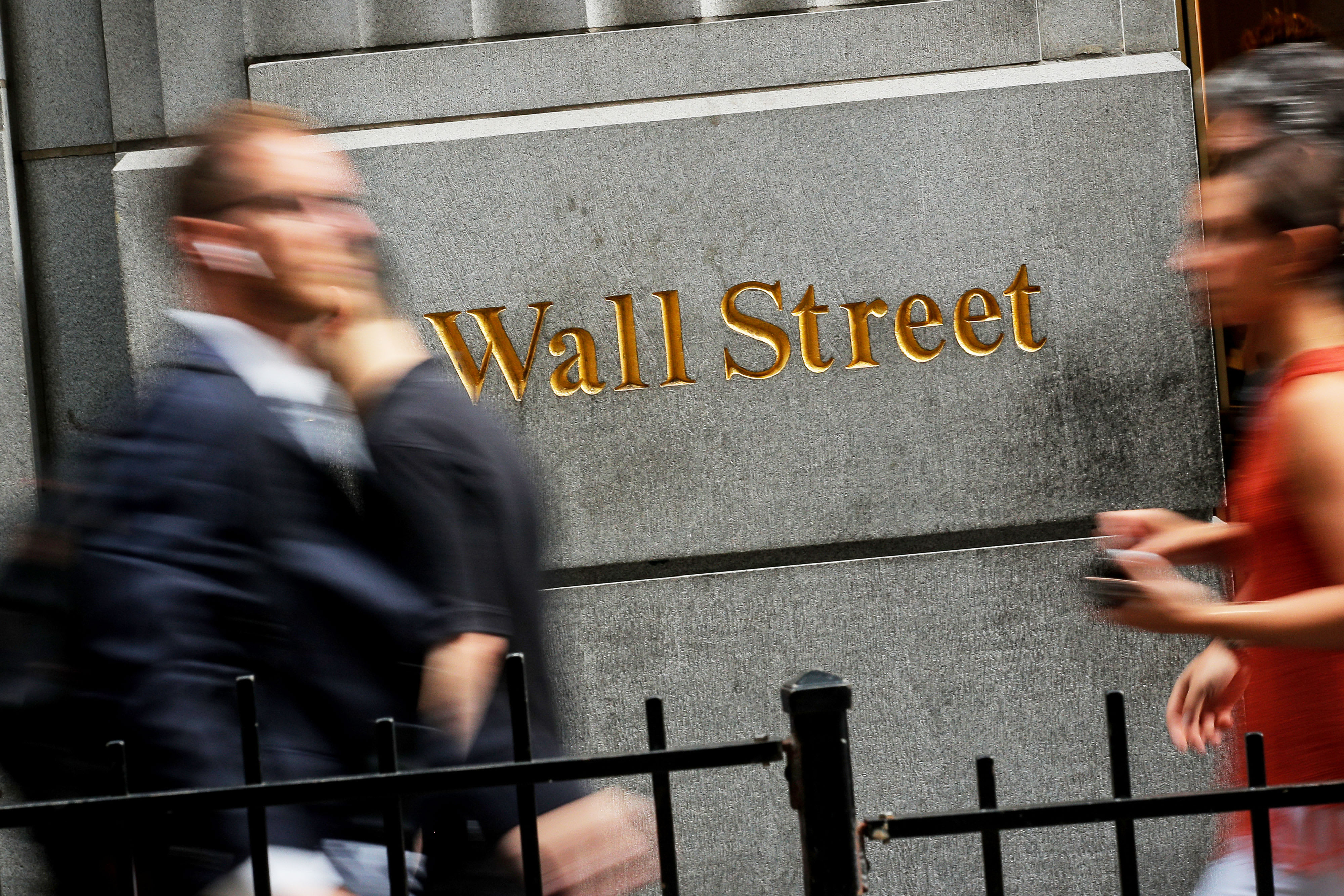
A dizzying 12-month period in the markets has seen threats from a trade war, a global economic slowdown or even a recession and, oh yeah, a global pandemic unmatched in a century, all of which have amounted to a whole lot of nothing, at least for the shares of big U.S. companies.
During the period, the S&P 500 is little changed — down about 1% heading into Monday trading — despite a series of threats that also has included political upheaval and the end to the longest rally in U.S. history. The year’s sum has been the result of a gradual rise to a record on Feb. 19, followed by the quickest slide in market history, then by a 28% rebound.
Other markets measures haven’t been so lucky.
The Russell 2000, which consists of smaller companies, is off about 22%. An exchange-traded fund that tracks markets in emerging economies such as China, India and Brazil, is off 20%, while another ETF that follows international stocks has fallen more than 16%. Even Main Street’s favorite market indicator, the Dow Jones Industrial Average, is down more than 10% over the past year.
There are multiple potential explanations for the S&P 500’s outperformance: The status of the U.S. as the best place in a bad investing climate, a plethora of policy support that has not been matched elsewhere and the hopes that the coronavirus crisis, while still crippling, is past its worst point.
“Large US public companies are better insulated from economic dislocation than either smaller ones (Russell) or European/Asian businesses that have to rely on less liquid capital markets and undercapitalized banking systems,” Nicholas Colas, co-founder of DataTrek Research, said in his daily market note.
“The bottom line: as much as fiscal/monetary stimulus has pride of place in explaining asset prices, that rising tide has not lifted all boats equally. We continue (as we have from 2017) to recommend US large caps over other equity asset classes,” Colas added.
Tech has made the difference
From a market mechanics perspective, the outperformance of big tech names has been a major boost for the S&P 500.
The index’s biggest movers in 2020 have been Amazon (30%), Microsoft (12%) and Netflix (33%). The S&P 500 is cap weighted, meaning that the bigger a company’s market capitalization, the more influence it will have on the index’s price. So even though Microsoft has gained less than Netflix, it has moved the index more because it is a much larger company.
Tech stocks on balance are the biggest influence on the index, accounting for 25% of the total cap. Health-care stocks comprise the second-biggest influence at 16%.
To be sure, the total price move over the past year is not at all indicative of how the market has behaved.
The Cboe Volatility Index, which uses options to gauge market fear, hit its all-time high in mid-March, about the same time that the 11-year bull market came to a halt. Since then, the market has become less fearful, though Monday’s slide showed that there’s still plenty of volatility around.
After all, the S&P 500 is still down about 15% from its all-time high and faces some horrible headline risk ahead in the form of unemployment possibly higher than the nation has ever seen, a housing market teetering on the brink and an uncertain path ahead for the coronavirus.
“The bottom line is that given we are facing the deepest recession and highest unemployment rate since the war, and equities were not exactly cheap before the virus hit, we think it unlikely that we get away with ‘only’ a [15%] fall in the S&P,” wrote Inigo Fraser Jenkins, co-head of portfolio strategy at Bernstein Research. “We think we will face an extended period of higher volatility and also think it highly likely that we see a pull-back in the near term as the difficulties of exiting lockdown (or the risk of a re-imposition of lockdown) become apparent.”
Fraser Jenkins attributes the recent rally to three factors: the passing of “maximum uncertainty” about the virus, the massive policy response from the Federal Reserve and Congress, and the continuation of the TINA — There Is No Alternative — trade that has boosted U.S. stocks repeatedly through global rough patches.
“Medium term we are more constructive and we think that equities and gold are the two best asset classes to hold,” he added. “Tactically timing the risk exposure is probably not possible precisely so although we are suspicious of the rally we think investors should consider a phased step approach to buying risk assets.”
Likewise, Goldman Sachs strategist Alessio Rizzi said a potential turning of the corner on coronavirus cases coupled with massive fiscal and monetary easing are helping, and he cautioned about taking too much of a “risk-on” approach now.
“While we believe that recent developments support the recent risk-on move, the more constructive pricing of growth and risks lowers the bar for disappointments,” he said.

